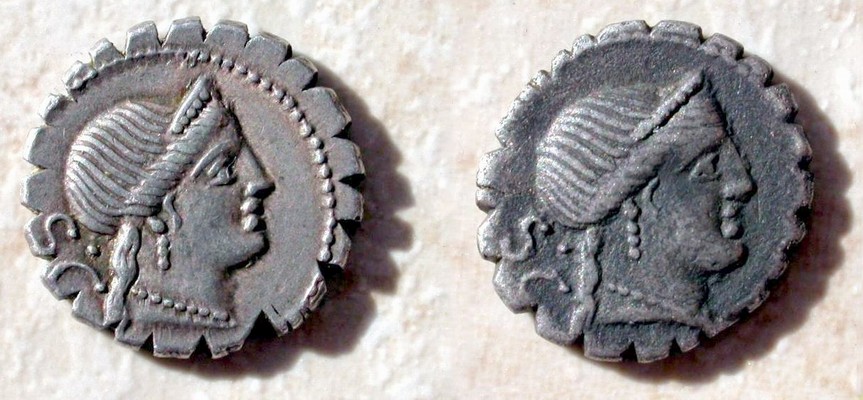Denarii with serrated edges appeared around 209 BC, two years after the introduction of denarius coinage. Roman serrati display a typical sawtooth pattern on the edges - the process of serration was done by hand and the notched chisel marks probably improved aesthetic appeal. Spacing of the notches and dents of Roman serrati were irregular, as indicated by the examples below, unlike Greek serrated coins which had equally spaced and shaped notches, although these also appeared irregular due to the process of embossing. |
 |

